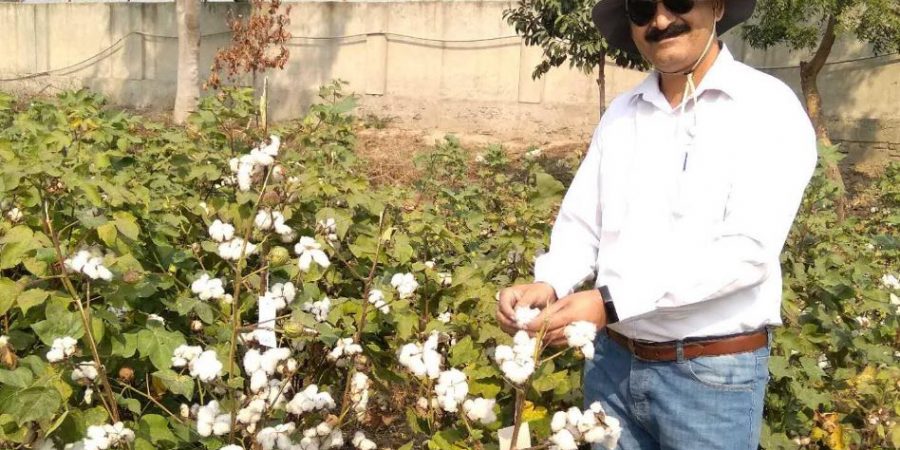Pakistani scholar taps Pak-China coop in cotton research

This collaboration is imperative as Pakistan doesn’t have cotton that is suitable for machine picking, and China’s cotton is not that resistant to heat and drought, ,” said Muhammad Tehseen Azhar, a Faculty member of Department of Plant Breeding and Genetics, University of Agriculture Faisalabad (UAF), and Lecturer-Chair of Germplasm and Genetic Stocks, ICGI.
The Gwadar Pro quoted him as having said, that lack of technology in Pakistan could be problematic for some time. “Pakistan is still on the list of developing countries, and there’re lots of differences in cotton research between Beijing and Pakistan, like the lack of proper infrastructure in agriculture.”
“Farm work is mechanized in most parts of China, you know, from sowing to picking or harvesting, but Pakistan is still in the end of that line,” he further mentioned.
In order to tap the potential of Pak-China cooperation in cotton research, he has signed MoUs of joint research program with different Chinese institutions, including Department of Science and Technology of Xinjiang Uygur Autonomous Region, Xinjiang Agricultural University (XAU), School of Agriculture Sciences, Zhengzhou University, and Institute of Cotton Research (ICR) of Chinese Academy of Agricultural Sciences (CAAS), Anyang.
According to Muhammad Tehseen Azhar, the Gwadar Pro added, germplasm is the baseline of breeding, so a breeder cannot conduct any experiment without germplasm. Therefore, a gene pool that has all the desirable genes needed for the development of variety is longed by scientists and it calls for efforts from scholars of different nations.
He has already signed a MOU operation agreement on research of cotton germplasm resources with Professor Du Xiongming, director of Cotton Germplasm Resources Division, ICR, CAAS, to assess the adaptability of the Chinese germplasm of cotton in Pakistan.
Dr. Azhar also mentioned the idea of consolidation and standardisation in the cotton seed industry in Pakistan. He noted that cotton outputs in Pakistan have plunged to 21-year lows these days, threatening the livelihoods of growers and textile sector’s viability.
According to the latest official statistics, Pakistan is going to harvest 8.5 million bales of cotton in 2020/21.
As per Dr. Azhar, poor cotton production is mainly the result of a shift to other remunerable crops like corn, rice, and sugarcane. And cotton area is expected to decline mainly due to the potential threat of pest attack, uncertain weather conditions, followed by insufficient availability of certified seed. Besides, social economic problems like the lack of labour force are worsening the situation.
“Our work is to set up standards, like the purity standard, the generation standard; that’s what we do as humble researchers,” Dr. Azhar said adding, “It might be lonely, but it could make a difference for mankind.”
Related News

Bangladesh edge Pakistan in second T20I to register first-ever series victory
DHAKA: Wicketkeeper batter Jaker Ali’s gutsy half-century, followed by a ruthless bowling effort, led BangladeshRead More

Bangladesh post 134-run target for Pakistan in 2nd T20I
MIRPUR, JUL 22: Bangladesh posted a modest target of 134 runs for Pakistan in theRead More


Comments are Closed